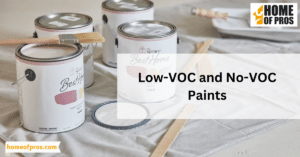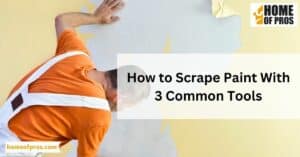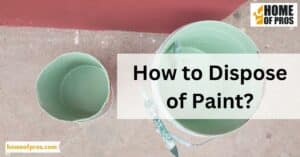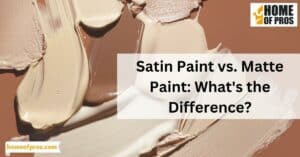Whether you’re a DIY enthusiast or a seasoned professional, dealing with old, peeling paint can be a daunting task. But fret not, because we’re here to help. In this article, we will delve into eight of the best natural paint removers, offering an environmentally friendly and safe solution for every kind of surface.
Save time, money, and the environment by using natural paint removers such as pressure washing, ammonia & borax mix, sandpaper, washing soda paste, hot vinegar solution, baking soda & hot water mix, hydrogen peroxide, and soy-based gel paint removers. Wear gloves and protective eyewear when using any method for safety!
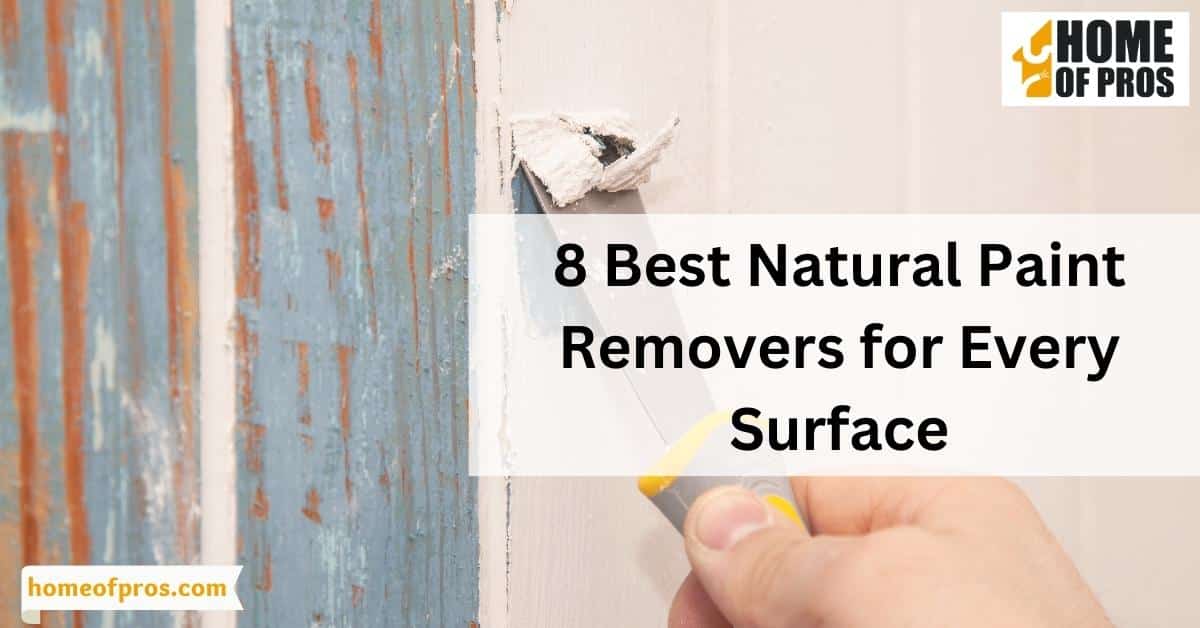
1) Pressure Wash
The pressure safety method efficiently removes paint, especially from exterior surfaces like concrete or bricks. While it does use water, the pressure is the real workhorse here, pushing off old, peeling paint in a snap. However, it’s essential to be mindful of the force you’re using as excessive pressure can damage the underlying surface.
It’s always best to start at a lower setting and gradually increase the pressure. Also, remember that pressure washing isn’t necessarily suitable for all types of surfaces – it’s not recommended for softwood or plaster, for instance.
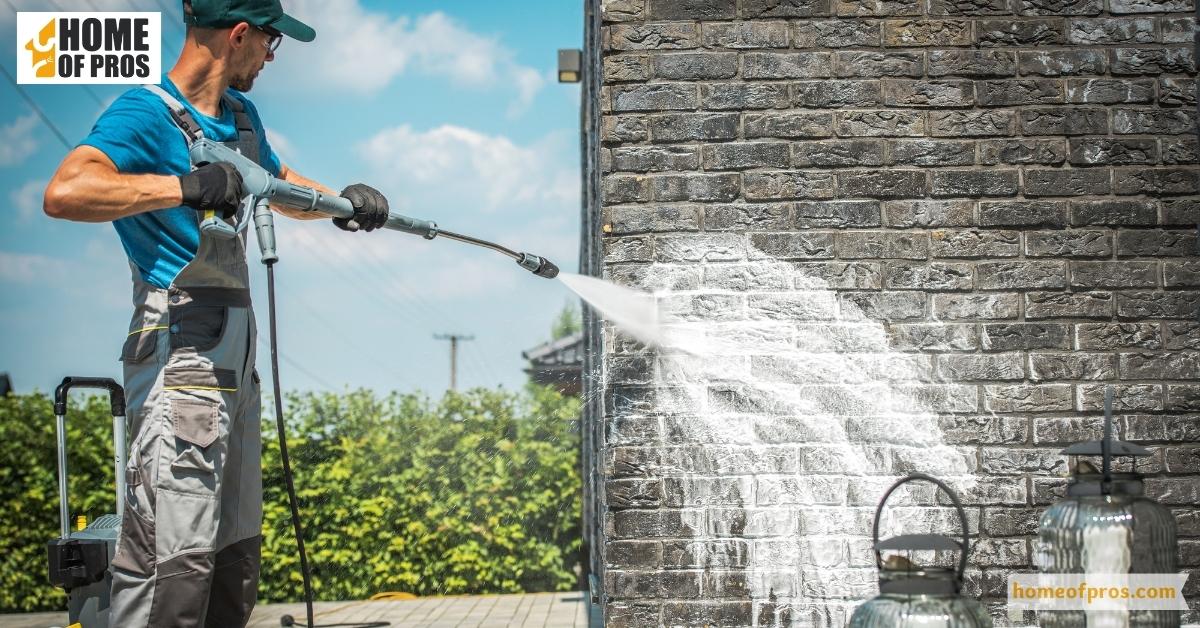
2) Ammonia and Borax Paint Remover
Ammonia and Borax paint remover is a potent concoction that effectively strips paint off various surfaces, while still being environmentally friendly. The mixture works by breaking down the paint’s structure, making it easier to scrape off. It’s important to remember to use gloves and protective eyewear when handling these substances, as they can cause skin and eye irritations.
Furthermore, ensure you’re working in a well-ventilated area or outdoors to prevent inhalation of any fumes. The solution is best suited for stubborn, oil-based paints that other natural removers may struggle with.
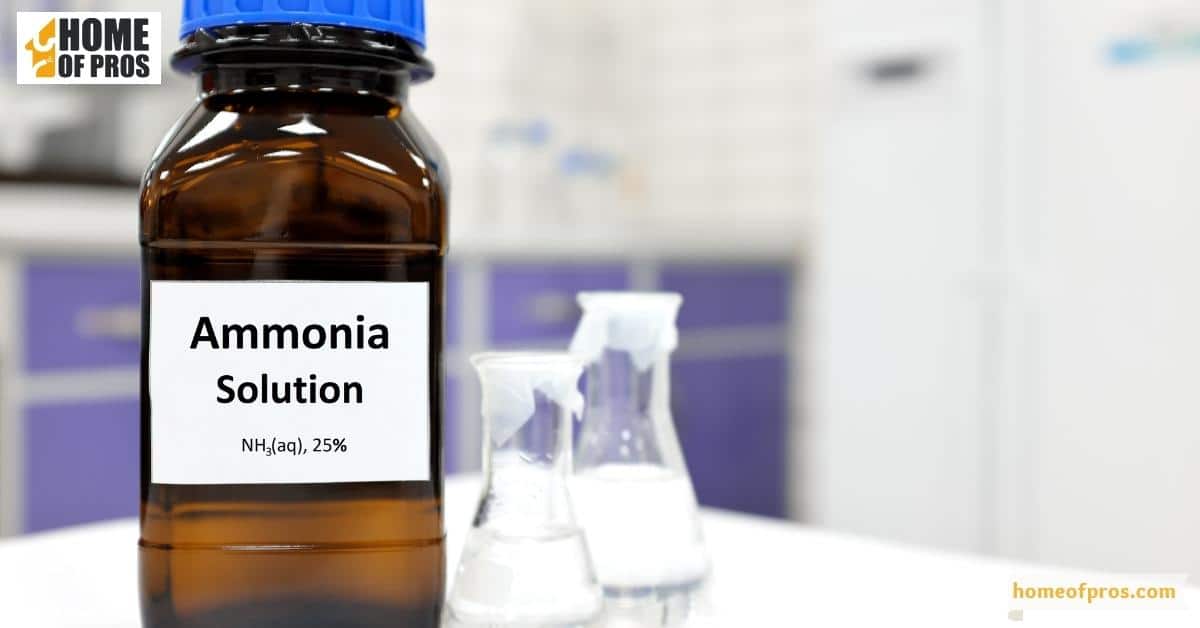
3) Sandpaper
Sandpaper is a tried-and-true method for removing paint. Ideal for wooden surfaces and furniture, it involves manual labor but gives you a lot of control over the process. Depending on the thickness and type of paint, you may need a variety of grits, from coarse for thick layers of old paint to ultra-fine for creating a smooth finish.
Always start with a low grit number and work to higher ones for the best results. However, remember to wear a dust mask as the scraping process can generate a lot of dust particles.
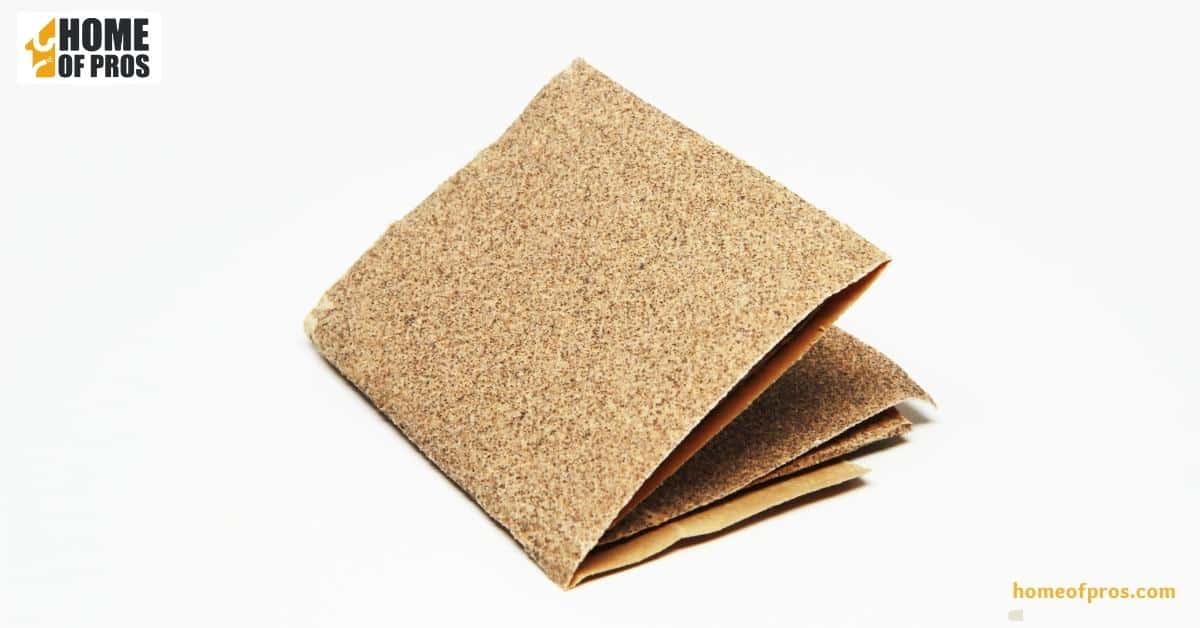
4) Washing Soda Paint Remover
Washing soda, also known as Sodium Carbonate, is a powerful natural paint remover. It’s not only effective but also incredibly easy to use and readily available. Mix one cup of washing soda with enough hot water to form a thick paste to make a paint-removing solution.
Apply this to the painted surface and let it sit for several minutes. You’ll begin to see the paint bubbling and lifting, making it simple to scrape off with a putty knife or a similar tool. Be aware, washing soda can be irritating to skin and eyes, so protective gloves and eyewear should be worn during this process.
It’s especially effective on latex-based paints and is a great option if you’re looking for a non-toxic and affordable paint remover.
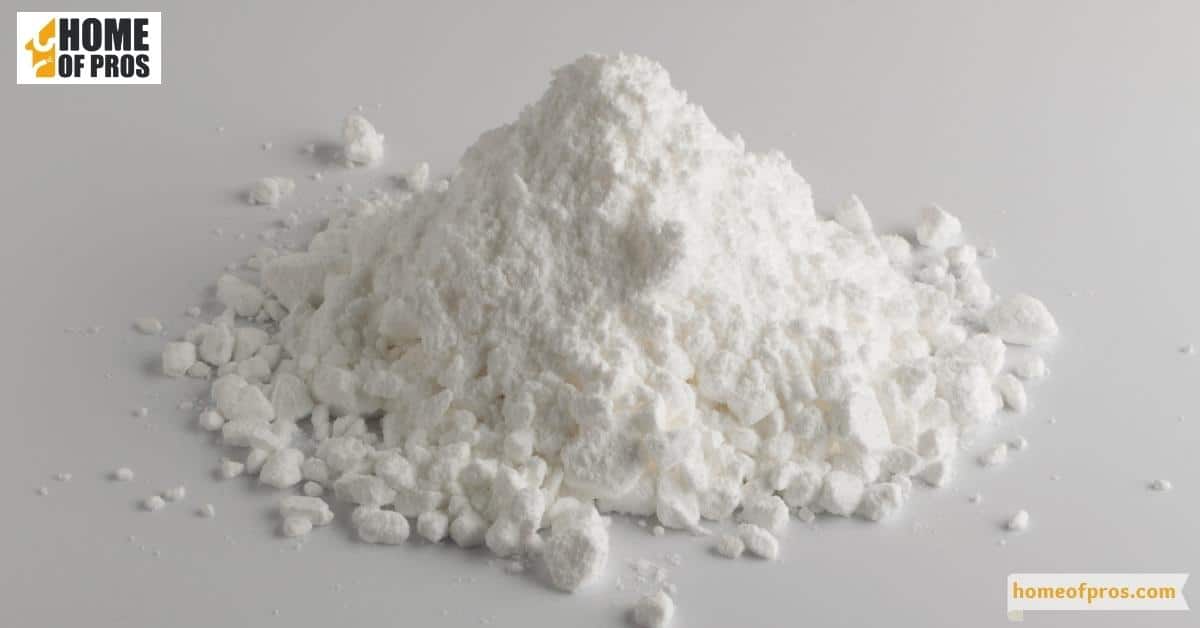
5) Hot Vinegar Paint Remover
Hot vinegar is a surprisingly effective paint remover that’s non-toxic, affordable, and easy to use. This method works best on small projects, such as painted hardware or furniture details. Heat a small amount of white vinegar in a saucepan until it’s warm but not boiling.
Using a paintbrush, apply the heated vinegar to the painted surface and let it sit for a few minutes. The warm vinegar will loosen the paint, making it easier to scrape off with a putty knife. Please note, it might take a couple of applications for older, thicker paint layers.
Also, be cautious when handling the hot vinegar to avoid any burns, and ensure to work in a well-ventilated area due to the strong smell. While it’s not as quick as some other methods, it’s a safe and natural option particularly suited for small detailed work.

6) Baking Soda and Hot Water
Baking soda and hot water provide an effective, easy-to-make, and safe solution for removing paint. This natural paint remover is ideal for use on a variety of surfaces, including wood and metal. To prepare this solution, mix equal parts of baking soda and hot water to create a paste. Apply this paste to the painted surface, covering it thoroughly and evenly.
Allow the mixture to sit until it cools and hardens. Once hardened, it should be easy to scrape off, taking the paint with it. This method works especially well on water-based paints.
Given its non-toxic nature, it’s a great option for those who are environmentally conscious or have children and pets at home. Always remember to wear gloves during the process to protect your skin.
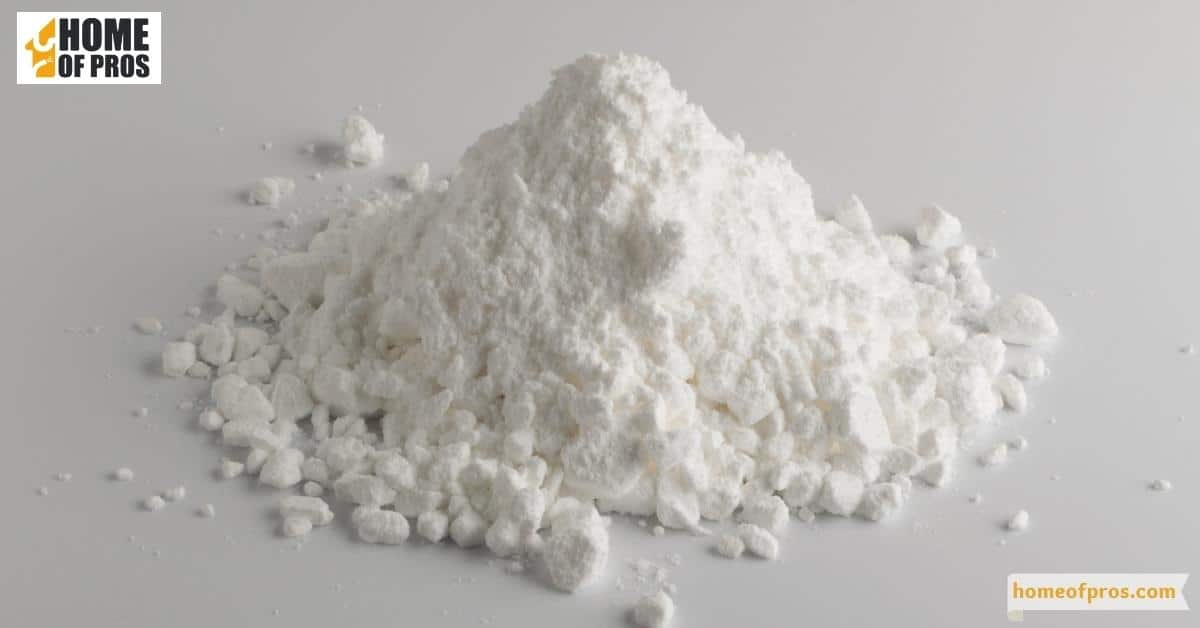
7. Hydrogen Peroxide
Hydrogen peroxide is a versatile and potent paint remover that is especially effective on stubborn paint stains. It works on a variety of surfaces, but it is particularly useful for small spots on fabrics or upholstery. To use hydrogen peroxide as a paint remover, simply apply a small amount to the paint stain and let it sit for about 10 minutes.
The peroxide will break down the paint, making it easy to scrub away with a cloth or a soft brush. However, it’s important to note that hydrogen peroxide can bleach certain fabrics, so always do a spot test before application.
Additionally, ensure to wear gloves and protective eyewear as hydrogen peroxide can cause skin and eye irritation. This method is a great option for those looking for an eco-friendly and low-cost solution to deal with minor paint stains.

8. Soy-Based Gel Paint Removers
Soy-based gel paint removers are a safe, non-toxic, and environmentally friendly way to tackle tough paint removal jobs. These gel removers are made from soybeans and other natural ingredients, making them a great choice for those who are conscious about the products they use. The gel-like consistency helps it cling to vertical surfaces, making it perfect for walls or furniture.
To use, apply a thick layer of the gel to the painted surface and let it sit for several hours, or even overnight. The gel softens the paint, allowing you to easily scrape it off with a putty knife or similar tool.
It’s an excellent option for removing multiple layers of paint, even on intricate details, without damaging the surface beneath. Though it takes a bit longer to work than some chemical-based strippers, the wait is worth it for the safe, effective, and eco-friendly results.
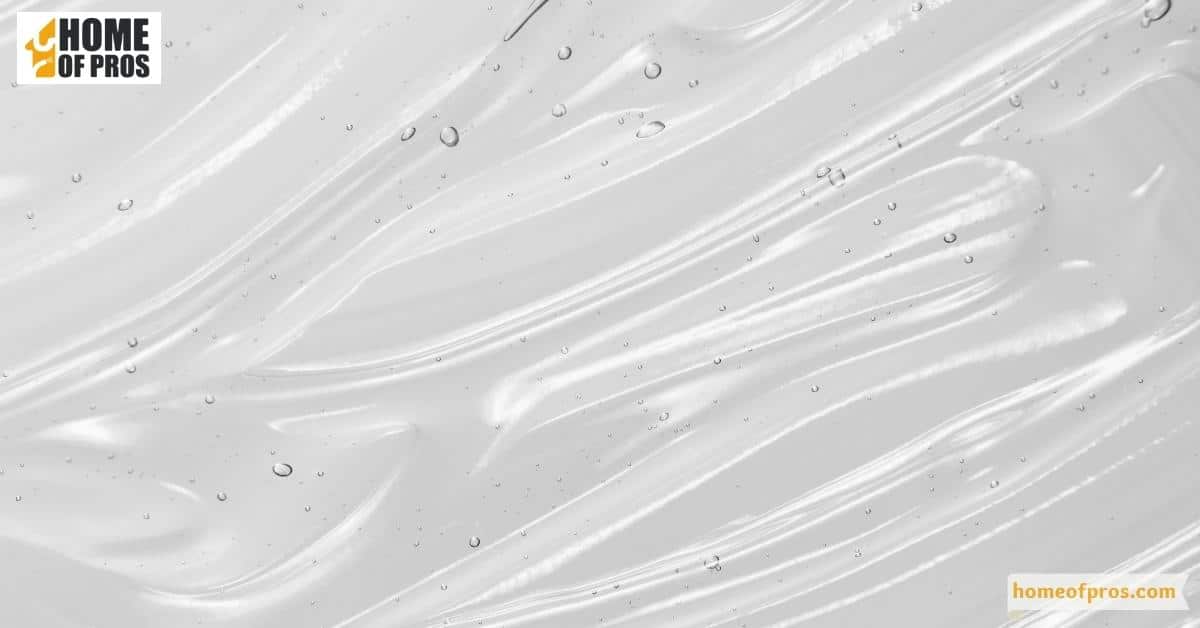
In conclusion
Choosing the right paint remover can make a significant difference in the outcome of your project. The natural methods we’ve outlined above offer an array of benefits, from being eco-friendly to easy on the pocket.
Whether you’re tackling an entire wall with the power of pressure washing or detailing furniture with hot vinegar, there’s a suitable natural solution for every paint removal task. Remember, safety is paramount when dealing with paint removers, even natural ones.



